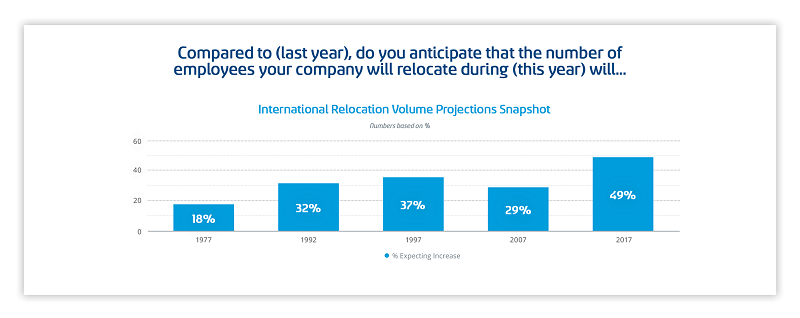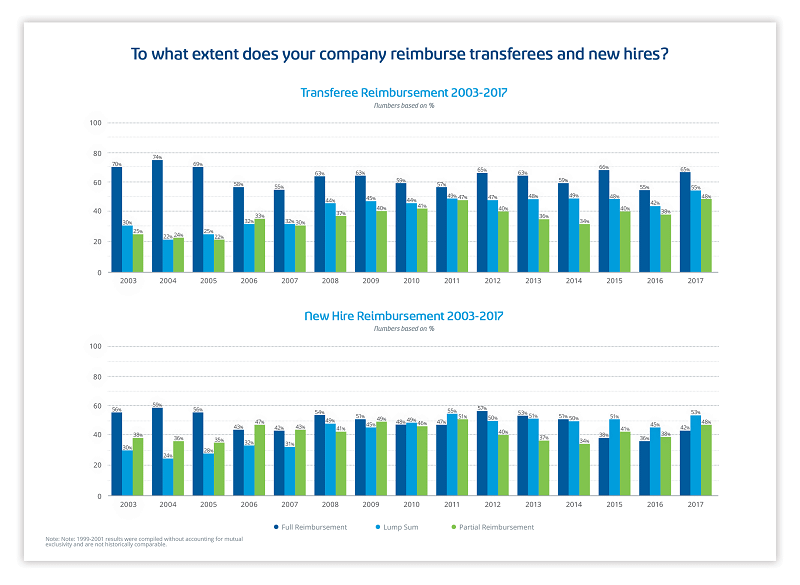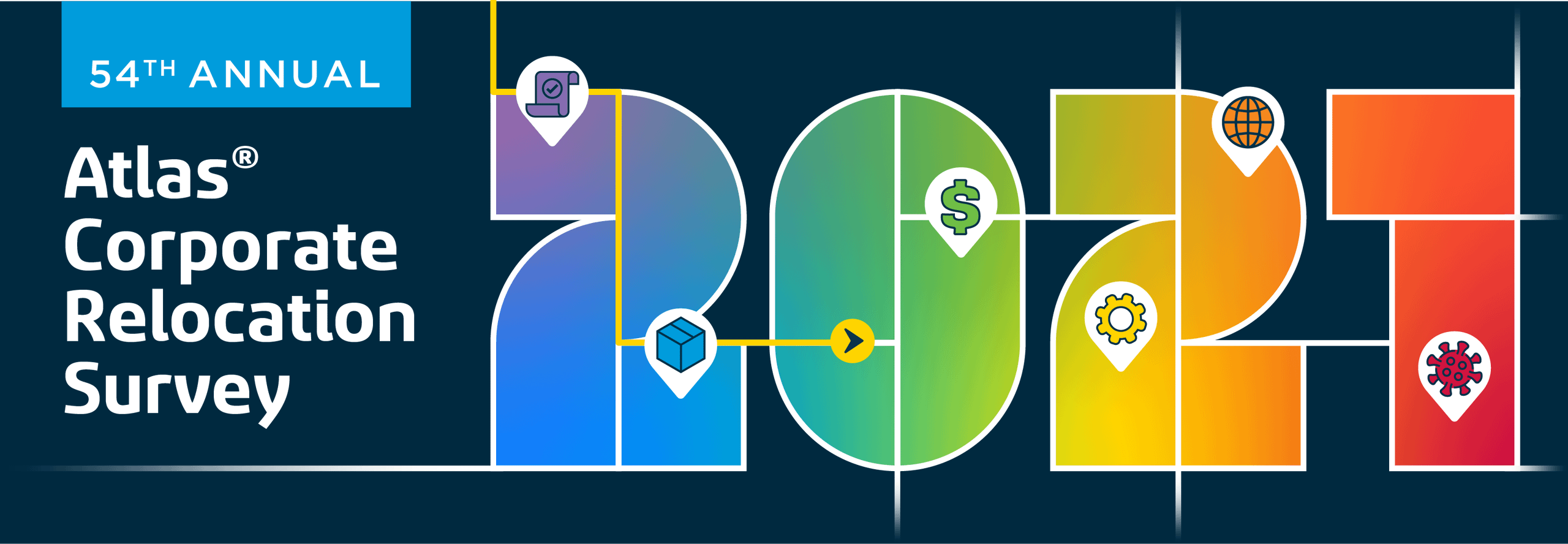
Over the past 50 years, Atlas® has monitored relocation policy and practice via our annual Corporate Relocation Survey to better understand how demographic, geopolitical and economic shifts affect the industry year to year. While many trends can be found along the arc of the last half century, here are three major trends that have profoundly impacted relocation in the survey’s golden year.
Who responded?
Atlas received survey responses from 471 individuals employed in a variety of industries. Of the respondents, 88 percent work in human resources or relocation/mobility services departments and 48 percent work at international firms.
What are the major trends for 2017?
Technology Changes “How” We Communicate, but “What” Stays Largely the Same
Twenty years ago, only 16.2 percent of respondents indicated that they used the internet for relocation-related matters. Today, it is used nearly universally (96 percent) to accomplish relocation-related tasks, with email correspondence being the most common usage type. While it is apparent that the method of communication has shifted from phone calls and forms to emails and online portals, the type of information communicated is largely the same (i.e. household goods pick-up and delivery dates, travel details, etc.).
Transferee Age Ranges & Generations On the Move
While younger employees under 40 years old comprise the majority of typical transferees, it is worth noting that since 2003, older employees make up around one-third of typical transferees and are roughly three times more likely to be relocated than in previous decades (11.7 percent in 1977, 13 percent in 1987, and 11.9 percent in 1997). Company growth, mergers and acquisitions, industry consolidation, free trade agreements in geopolitical zones, recessions, and globalization over the past 50 years have likely played a part in the changing career trajectories of older workers. Staying with a single company for the duration of a career, or even having the opportunity to stay in a single geographic area, has become less of a possibility over the past half century. These factors play a large part in this emergent shift in the age range of typically relocated employees.
International Relocation Explodes
Expectations for increased international relocation volume has changed dramatically over the course of 50 years. In 1977, only 18.3 percent of responding firms indicated that they were expecting to relocate more employees overseas. In 2017, essentially half of firms expect to send more employees on international assignments in the coming year. As companies are increasingly global in scope and size, the need for employees to be able to transition seamlessly across borders and interact with clients and staff from all over the world is greater than ever. Cultural literacy and global mindsets are growing with experience. Gen X and millennial employees are the product of parents who experienced a shift from spending entire careers at a single firm to the need to be open to new opportunities and locales in order to grow their careers. Stepping outside home countries to see the world beyond borders appears to be the next step in this transition.

Spousal Employment/Dual Income Households – Family Composition Weighs Heavily on Relocation
Since 1977, there has been a seismic shift in spouse/partner employment impacting relocations. It frequently influences relocations roughly three times more than in 1977 (17.8%) and 1987 (22%), after reaching more than double those levels in 1997 and 2007 (52%). Nearly two-thirds of firms state that spouse/partner employment impacted employee relocations over the past three years, the highest levels historically.
Families that came through the Great Recession may be reluctant to gamble financial security on single salaries, placing a higher priority on keeping a dual-income household. As a result, far more firms offer spouse/partner employment assistance. Only around one in ten firms offered this in 1977 - now, nearly two-thirds of firms offer this type of assistance in 2017.
Immense Diversification of Assignments, Policies & Reimbursement Method Shifts
In recent years, the Great Recession has played a massive role in redefining relocation assignments and reimbursement methods. Creativity of the highest level was demanded of industry professionals to balance crushing economic blows with talent needs of their organizations, and yet another transformation of the industry occurred. Types of assignments expanded, new policies formalized and greater flexibility became built-in; cost containment efforts, incentives, and reimbursement methods all diversified to meet the needs presented.
- Since 2015, roughly two-thirds of firms indicated they are using alternative assignments. Additionally, 67% of firms continue to indicate they have a formal short-term/temporary assignment policy, 54% have an extended business travel policy, and 43% have a policy for long-distance commuters.
- Since 2015, nearly nine out of ten firms indicate using fixed/flex or core coverage/menu-based policies to give relocating employees options in how they use their relocation policy benefits to meet their unique needs.
- Since 2014, roughly eight out of ten firms state they use cost containment methods to keep their relocation costs down, while at the same time, 86% are also using incentives to entice employees to relocate. Incentivizing the right talent to relocate, while maintaining a budget, is a strenuous balancing act.

Prior to the new millennium, full reimbursement was the most frequently utilized method of cost coverage for relocations for both transferees and new hires. However, in recent years, companies estimate that roughly half of their relocations were only partially reimbursed by the company or were funded via lump sum payment. While full reimbursement is still the most popular reimbursement method for transferees (65%), lump sums are used frequently (55%), as well as partial reimbursement (48%). Reimbursement type often depends upon current employee level. New hires have seen the greatest permanent shift away from full reimbursement in recent years. For the third straight year full reimbursement of expenses for new hires (42%) is out of favor in comparison to lump sum payments (53%) and partial reimbursement (48%) and remains near the lowest levels historically measured.




